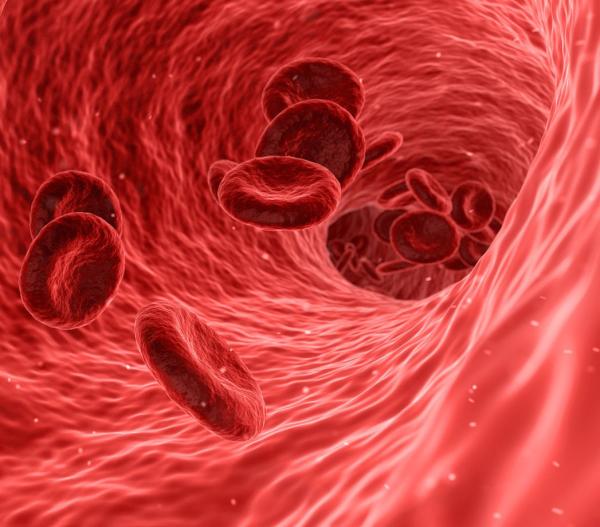Cutting Calories Combats Aging Arteries

IRP researchers have discovered the mechanisms by which dramatically reducing caloric intake delays the effects of aging on arteries.
While many people think staving off aging means drinking seaweed smoothies and swallowing fish oil supplements, the key to extending life increasingly appears to be not putting things in our mouths. In yet another example of the anti-aging powers of eating less — what scientists call caloric restriction — IRP researchers have identified the specific aging-induced cellular and molecular changes in arteries that are curbed by substantially reducing calorie intake.1
The central arteries that move blood from the heart to the rest of the body become thicker and stiffer with age.2 This makes them less able to stretch when blood flows through them. As a result, the heart must pump harder and pulsatile blood pressure — a measurement of the force the heart exerts with each beat — increases, straining the organ and eventually leading to heart disease. Meanwhile, smaller blood vessels in other organs cannot handle the increased pulsatile blood pressure, so the vessels get damaged and the blood supply to those organs decreases, potentially contributing to aging-related ailments like kidney disease and Alzheimer’s.
“Aging is a major risk factor for those diseases because it causes subclinical manifestations of disease,” says IRP senior investigator Edward Lakatta, M.D., the senior author of the new study. “Aging itself usually doesn’t lead to clinical disease, but when other factors become superimposed on arteries altered by aging — for example, eating too much, lack of exercise, or smoking — they can more easily cause clinical-level symptoms.”
Prior studies by Dr. Lakatta and his collaborator, IRP senior investigator Rafael de Cabo, Ph.D., as well as other research groups, have shown that dramatically reducing the amount of calories an animal consumes can slow the rate at which arteries stiffen with age.3,4 In the new study, the IRP team examined the arteries of rats to investigate why this happens. One set of rats was allowed free access to food, while another — the calorie-restricted group — was fed 40 percent less than the average intake of the freely eating animals.
The walls of human and rat arteries both contain a flexible protein called elastin and a rigid one called collagen. Our arteries stiffen as we age because the elastin breaks down and the amount of collagen increases. As expected, in the rats on the unrestricted diet, older animals had less elastin and more collagen in their arteries compared to young animals. The older rats’ arteries also showed more activity in a protein called MMP2 that breaks down elastin and in a protein called TGF-β1 that promotes collagen production. However, all of these age-related differences were markedly reduced in the calorie-restricted rats, resulting in elderly animals with arteries that more closely resembled those of their younger counterparts.
Aging also causes vascular smooth muscle cells (VSMCs) to move from the middle layer of the artery wall to the innermost layer, the intima, causing the latter to become thicker. This change, believed to be driven by a protein called platelet-derived growth factor (PDGF), contributes to atherosclerosis, a dangerous buildup of plaque in blood vessels that can lead to heart disease and other ailments. Dr. Lakatta’s team found that aged rats that had had free access to food had more VSCMs in the intima compared to younger rats, as well as greater activity in the PDGF gene, but this disparity was markedly reduced in the calorie-restricted rats.
“There’s a convergence of information here,” says Dr. Lakatta. “We knew that there were several processes promoted by aging that cause central arteries to stiffen, and now we’re showing that caloric restriction makes the arteries better by interfering with those processes.”
Further studies are needed to determine whether caloric restriction slows aging in humans like it does in rats and other animals. In addition, studies like Dr. Lakatta’s that probe the molecular mechanisms involved in this phenomenon could open up new therapeutic approaches for preventing or treating diseases associated with aging.
“There are very few things we have that will ameliorate the effect of time,” says Dr. Lakatta. “Going beyond observing arterial stiffness to knowing what causes it means there are targets that can be addressed.”
Subscribe to our weekly newsletter to stay up-to-date on the latest breakthroughs in the NIH Intramural Research Program.
References:
[1] Calorie Restriction Curbs Proinflammation That Accompanies Arterial Aging, Preserving a Youthful Phenotype. Wang M, Zhang L, Zhu W, Zhang J, Kim SH, Wang Y, Ni L, Telljohann R, Monticone RE, McGraw K, Liu L, de Cabo R, Lakatta EG. J Am Heart Assoc. 2018 Sep 18;7(18):e009112. doi: 10.1161/JAHA.118.009112.
[2] Age-related vascular stiffening: causes and consequences. Kohn JC, Lampi, MC, Reinhart-King CA. Front Genet. 2015 Mar 30;6:112. doi: 10.3389/fgene.2015.00112.
[3] Effects of Calorie Restriction on Cardioprotection and Cardiovascular Health. Ahmet I, Tae H, de Cabo R, Lakatta EG, Talan MI. J Mol Cell Cardiol. 2011 Aug; 51(2): 263–271. doi: 10.1016/j.yjmcc.2011.04.015
[4] Long-term calorie restriction is highly effective in reducing the risk for atherosclerosis in humans. Fontana L, Meyer, TE, Klein S, Holloszy JO. Proc Natl Acad Sci U S A. 2004 Apr 27; 101(17): 6659–6663. doi: 10.1073/pnas.0308291101.
Related Blog Posts
This page was last updated on Tuesday, January 30, 2024
